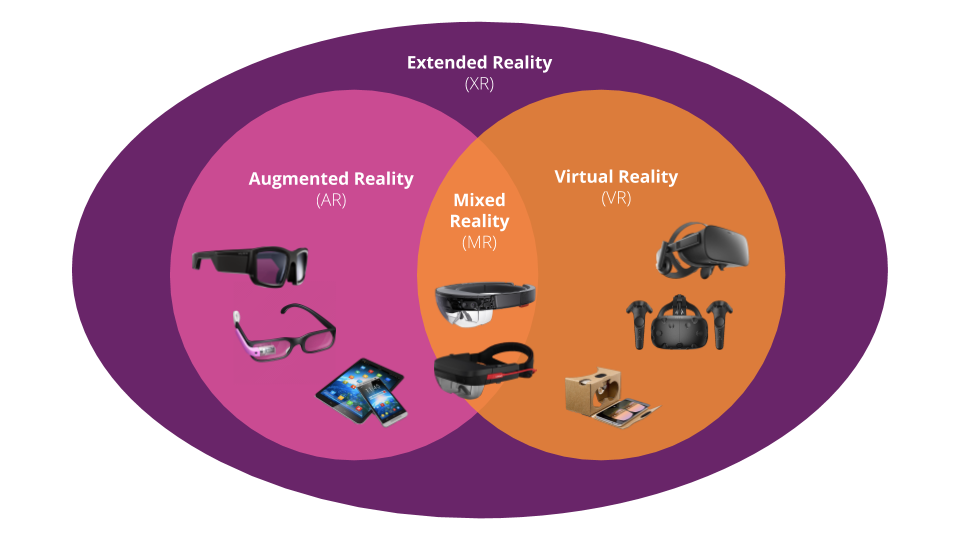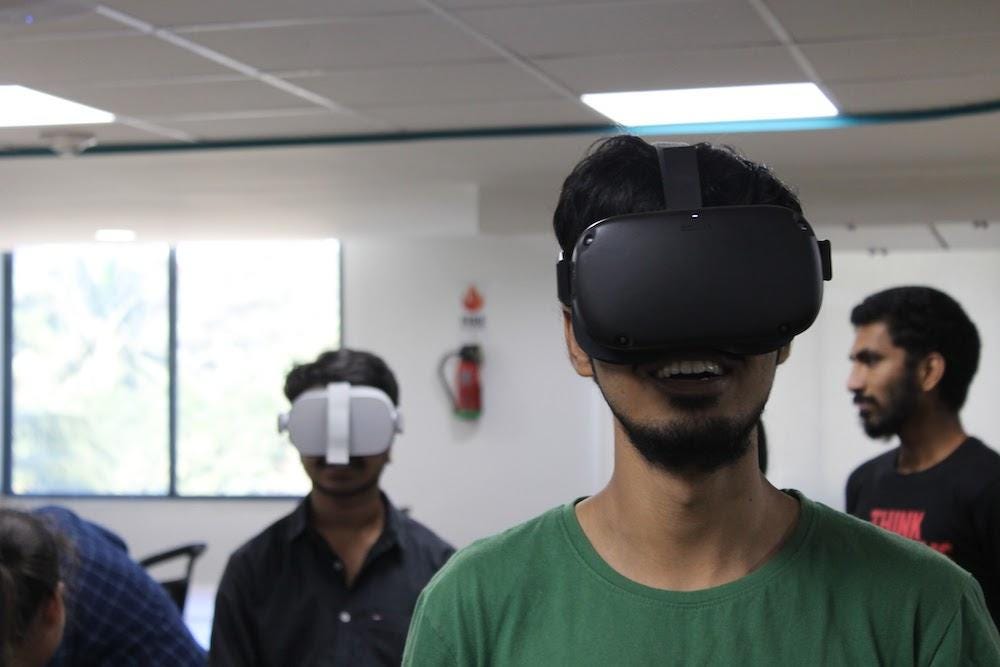eXtended Reality - the new norm?
- 6 minutes read - 1150 wordsThis article is originally published at TechTag.de, you may find the German version here too.
The interaction between humans and technology is evolving radically. We need to develop our thinking and skills beyond the keyboard and screen. But what does this new technological reality look like? Here it is worth taking a closer look at the different forms of extended reality and how they can change our everyday lives.
The way we interact with technology today isn’t too far from what was predicted by futuristic sci-fi pop culture. We live in a world where sophisticated touch and gesture based interactions with wearables, sensors, augmented reality (AR), virtual reality (VR) and mixed reality (MR) work together. This creates an extremely immersive user experience.
Gartner predicts that the implementation of 5G and AR / VR will transform not only how customers interact, but also the entire product management cycle of brands. In fact, according to Deloitte, it is expected that in 2024, VR hardware and applications will generate sales of 530 million euros in Germany, in the best case even 820 million euros if new applications or gadgets conquer the market.
In order to better understand what influence augmented forms of reality can have on our everyday lives and what opportunities companies and users have to interact with the world around them, it is first necessary to illustrate the various terms used in the discussion be used.
VR, AR, MR - the variety of realities
 Forms of Extended Reality
Forms of Extended Reality
Virtual Reality (VR) - the best-known term - is an immersive experience that opens up completely new worlds by allowing users to immerse themselves in a virtual, computer-generated world with innovative forms of interaction. The technology can be used with Head Mounted Display (HMD) devices. Smartphone-based VR is the most economical choice to test the technology. Google Cardboard and similar variants are quite popular in this segment. All you need is a smartphone that fits in a pre-made box. Many media players and content providers such as YouTube now offer stereoscopic 360-degree content.
 Users testing VR devices
Users testing VR devices
Augmented Reality (AR) in turn represents digital content in a real environment. Smart glasses project digital content directly in front of the user’s eye. In the past five years, such devices have evolved from bulky gadgets to lightweight glasses with more computing power, longer battery life, a larger Field of View (FoV) and consistent connectivity. This projection-based technology makes it possible to display digital content on a glass surface. One example of this is the head-up display (HUD), which is used by many automobile manufacturers. It projects content onto the vehicle’s windshield. Drivers can see contextually relevant information such as maps or speed limits.
If you combine AR and VR, you move in the area of mixed reality (MR), in which the physical world and digital content interact. Users can interact with the 3D content in the real world. In addition, MR devices recognize and store environments while simultaneously tracking the specific position of the device within an environment.
 User testing a Microsoft MR device
User testing a Microsoft MR device
Mixed reality devices such as Microsoft Hololens enable object recognition, scene storage and gesture-controlled operations.
The trend towards Extended Reality (XR) can be evaluated on the basis of the components mentioned. This collective term describes use cases in which AR, VR and MR devices interact with peripheral devices such as environmental sensors, 3D printers and internet-enabled smart home devices such as household appliances, industrial machines, vehicles and much more. Due to the synergies of AR, VR and MR technologies for the interactive display of 3D content as well as the modern development tools and platforms, the term XR is increasingly becoming a common language. In the industry, numerous use cases and opportunities for XR platforms are currently being evaluated, especially those that enable services across devices, development platforms and company systems.
Extended reality in its various forms is not just for gamers and tech enthusiasts. There are also a plethora of implementation options that businesses can benefit from.
A technology with versatile potential
Extended Reality can be used in a variety of areas in companies, starting with training your employees or maintaining your equipment. VR technology can create and simulate environments that are either difficult to reproduce or involve enormous costs and / or risks. Examples of such scenarios are factory training courses or training courses on fire protection or controlling an aircraft. AR, on the other hand, can offer technicians contextual support in a work environment. For example, a technical specialist wearing AR-enabled smart glasses can view digital content that is displayed in their work environment. This could take the form of step-by-step instructions for a task or looking through relevant manuals and videos while on the assembly line or on site performing a task. The AR device is also able to take a snapshot of the work environment for compliance checks. In addition, the tech specialist can stream their activity to a remote specialist who can annotate the live environment and review the work.
But companies can also take advantage of the technology that allows autonomous vehicles to create virtual maps and locate objects in an environment. Similar technology enables XR-enabled devices to recognize unique environments and track the location of the devices within. Virtual positioning systems of large systems such as airports, train stations or factories can be created. Such a system also enables users to mark, locate and navigate to specific target points.
XR technology can also be used in the retail sector to improve the customer experience and make it more unique. In an XR environment, customers have the opportunity to try out 3D models of products before buying them. For example, users can customize a virtual model of a piece of furniture in terms of color, interior design and fabrics. You can also look at the piece of furniture from all sides and experience the personalization and assess how it looks in the surroundings of your home.
Extended Reality: Hardware and software have to go hand in hand
XR technology is evolving at such a rate that the untapped potential is overwhelming. In order to be able to fully exploit it, it is recommended that the development of the software keep pace with the development of the hardware. The latter needs to be user-friendly and lightweight in terms of field of view, with immense processing power and battery power.
The software, on the other hand, needs to make better use of the advantages of artificial intelligence and machine learning in order to better assess different environments and make them accessible for every possible scenario. Organizations should also proactively create as many use cases as possible, fix deficiencies, and contribute to XR development practice. VR applications are a reality that prepares us for the pronounced effects of AR and MR technology in the future.
This article is derived from ThoughtWorks Insights and originally published at TechTag.de
#xr #ar #vr #mr #fundamentals #thoughtworks #technology